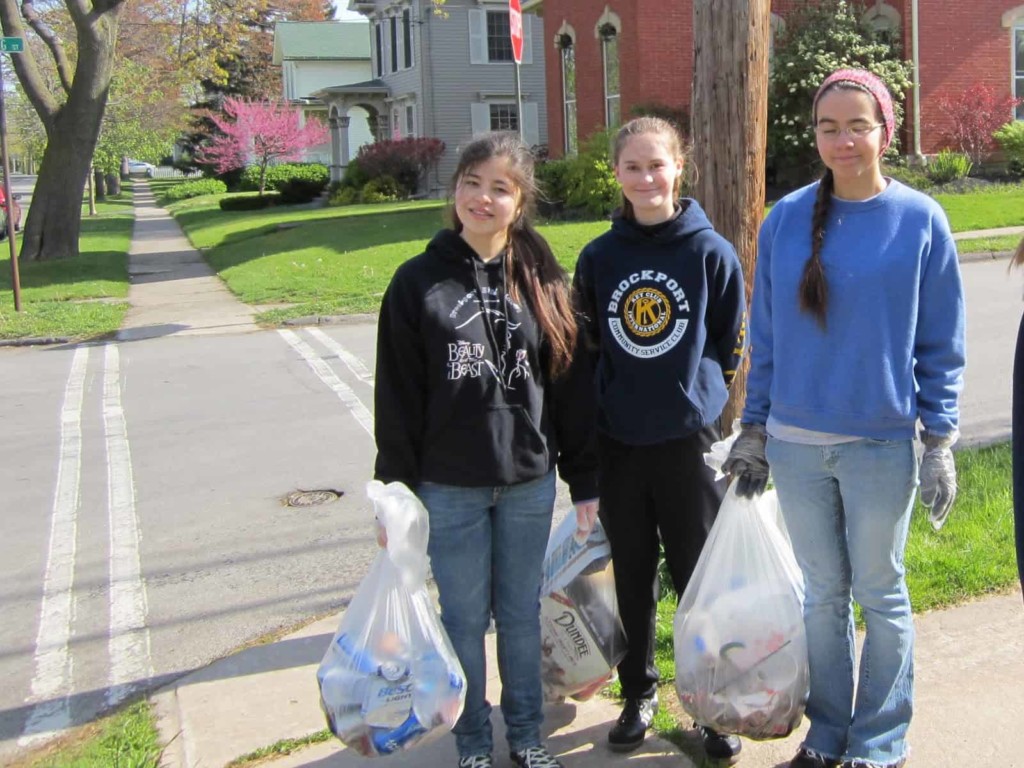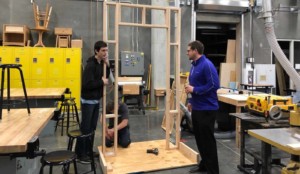4 Ways to Boost Service Learning in Schools

By: Wayne D’Orio
There is a mistaken assumption that community service done by high school students occurs almost automatically and that the hours students give to charities and events are a cinch to manage. In fact, there is wide variation in these programs’ success and value primarily due to two factors: mandates and management systems.
In some states, such as Kansas, Maine and Nebraska, more than 40 percent of high school students volunteer. Yet in other states, such as Arkansas, Louisiana and Tennessee, less than 20 percent of students donate their time. Mandates do boost participation but only 11 states require students to be involved in service learning, and only one—Maryland—requires students to complete community service to be eligible to graduate.
So why the disparity in participation levels? Teenager empathy driving them to participate plays a big role. However, according to two school leaders we interviewed, organizational skills and record-keeping systems have the more significant effect on whether a service program is a vibrant enriching program at the school or a burden no one wants to assume. How then are successful volunteer programs set up and managed? Two veteran New York state educators offer advice.
At Brockport High School in upstate New York, guidance counselor Christine Howlett’s program is such a success that she fills up all her slots and more within the first week of school. Not only that but because students are joining a Key Club, which is an international service organization, they must pay $20 a year to belong. In essence, these students are paying to be able to join an afterschool club and to volunteer in their community.
“By the third day of school I’m full,” says Howlett. She tries to cap the club at 100 students, who each volunteer at least 10 hours a year, but she usually ends up with 125.
In Queens, New York, Townsend Harris High School—which reopened in 1984 after a 40-year hiatus–has civic duty imprinted as strongly into its mission today as it did 40 years ago. Each Townsend Harris student follows the 4th Century B.C. Ephebic Oath, a pledge to civic virtue and giving back to their community, says Sarah Loew, a science teacher and coordinator of student activities at the school.
Howlett and Loew say following these four rules will help you maximize student community service participation at your school.

1. Organization is Key
When Howlett began tracking student service hours in her school 12 years ago, she faced more problems than solutions. “I had so many kids coming in to do college applications saying they had no community service,” she remembers. Howlett immediately resuscitated the school’s Key Club, the service group through which students can volunteer. The group quickly became the largest club in the school.
“The hardest part for kids was finding activities and approaching people,” Howlett discovered. Once the Key Club student leaders set up all the possible volunteer options beforehand, she says, the biggest obstacle to participation was removed. “Once word got out that you could show up, do your job, and turn in your hours, [the club] filled up pretty quickly.”
During the summer, Howlett assigns five student leaders to help set up 90 percent of the service opportunities for the entire school year. This planning allows students to manage their volunteer hours around schoolwork, sports they play, or the busy college application season, she adds. “You can’t do this and wing it.”
2. It’s Easier to Maintain a Strong Program
Habits can be hard to form, but once they are established, they are even harder to break.
While creating a strong volunteering community at your school can take a lot of work, it can pay off because it becomes easier to keep the momentum continuing.
On the student side, once the expectation to volunteer is established, it will be easier to get new high school students to join because they will have already heard about volunteering from older siblings, parents and friends. In the community, look to make annual events out of activities. From something as small as a community dinner to a large-scale fall cleanup effort, locking in partners and patterns early allows the community group to plan ahead and for students to better manage their time.
Loew says her school’s commitment to service learning is a big part of its identity. Because students in New York City have to apply to public high schools, many students enter Townsend Harris already understanding the school’s mission, she says. The Queens high school typically receives about 10,000 applications for its 200 spots, Loew says.
Brockport’s Key Club reputation is so established Howlett says that parents will know to push their freshman students to sign up for the club quickly or risk getting shut out altogether.
3. Show Students the Rewards of Community Service
At Brockport, Howlett is upfront with her volunteers, telling them, “I know this is a resume builder for you and an in to the National Honor Society. But I want you always to remember that what you’re doing has an impact on others.”
Many students typically write reflections on their volunteer experiences, but Howlett helps students connect their thoughts to larger issues, such as problems facing poor families or senior citizens in her community. With a school where almost half the students are eligible for free or reduced-price lunch, the guidance counselor says teens are aware residents are struggling but when they work at soup kitchens and clothing shelters they see how deep the battle can be. “So many students say, ‘I didn’t know this place existed,’” Howlett says these kinds of experiences can have a significant effect on a student’s life.
Her students have even been surprised to meet local nursing home residents who used to be teachers or who served in the military. These senior citizens tell spellbinding stories about what school was like in their day, or how they served their country when they were young. “I hope my kids are starting to learn that not all old people are boring,” she says with a laugh. Her real point is that students recognize that people we tend to push to the margins are valuable members of society. It’s about paying attention to life outside their immediate circle.
4. Make Record Keeping Easy
Both Loew and Howlett preach the importance of managing records electronically. Because keeping track of student service hours is only a small part of any school worker’s job, eliminating paper and ending time-consuming disputes about hours can keep programs big and small humming.
Howlett remembers how students would dispute hours and her secretary would constantly be chasing down slips of paper from forgetful teenagers. Now, she and Loew both use x2VOL, an online platform to not only mark service hours but also collect reflections. Students can pull their service transcripts and records from the site and submit the information for college applications, Howlett says. She likes that the platform gives her control over when to post volunteer opportunities, allowing her to ensure that upcoming events are fully staffed before allowing students to sign up for an event that is still months away.
Both educators agree that service gives their students far more than the benefit of a verified record to boost their college applications. When all is said and done, both say basically the same thing: service enriches their students’ education, providing organizational skills, and perspective that can’t be duplicated in a classroom. Required or not, service is worth the effort.
For more, see:
- Service Learning: Think Global, Act Local
- Helping Students Develop Discernment, Agency, and Empathy
- Educating the Whole Child Through PBL
Wayne D’Orio is a freelance journalist who writes frequently about education, equity, and rural issues. His education stories have taken him from backstage at Broadway’s Hamilton to crisscrossing the country on a bus trip with then Secretary of Education, Arne Duncan. Follow Wayne on Twitter @waynedorio.
Stay in-the-know with all things edtech and innovations in learning by signing up to receive our weekly newsletter, Smart Update.







0 Comments
Leave a Comment
Your email address will not be published. All fields are required.